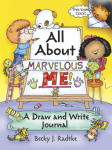Tonight, I am getting my workbox master plan set up for Pookie. We are using two curriculums with him.
My Father’s World Kindergarten covers the basic subjects of Bible, phonics and early math. It also includes hands-on activities that he will enjoy.
Heart of Dakota’s Little Hearts For His Glory is a program for 5-7 year old children. It teaches language arts (phonics), math, history, basic science, art, fine motor activity, storytime, and has a Bible devotional that is separate from the Bible memory verse.
Joining two curriculums may seem still but I am finding that not to be the case. Here is how I am seeing it up for Pookie.
Daily calendar – each morning we will have a morning calendar. I will have it somewhat set up on our pocket chart. Each morning, I will guide Pookie into placing the correct items in their space. For example, have him mark of the current day in the calendar, place the correct day of the week label in the chart showing “yesterday was, today is, and tomorrow will be”, color of the day, weather picture, and he will “dress” a laminated paper doll will clothing appropriate for the weather.
Bible study – MFW, Bible lesson for each day. I like how each week, the Bible lesson fits into the unit much easier.
Phonics – MFW, the letter of the week approach fits well with Pookie learning/reviewing his alphabet.
Math – MFW, the methods used is hands on. Teaching how to count and do very basic skills using counters and other manipulatives. It makes the lessons tangible and easier to learn.
The various hands-in activities in MFW-K teach art primarily art and science skills. These will give Pookie extra opportunity to progress in these areas. Most have a Montessori style to them.
The remaining subjects are all from the Heart of Dakota curriculum. Most will be done after lunch when he is more settled and less fidgety.
Bible Devotional – a short reading that corresponds to the history lessons of the day.
History – a short reading from either a reader or a Bible story.
Phonics (see above)
Math (see above)
Fine Motor – using the Do it Carefully workbook from Rod & Staff, the lessons teach prewriting skills, using scissors, coloring, and pasting.
Storytime – reading to Pookie classic stories such as The Adventures of Reddy Fox and other stories.
Thinking Games – teaches basic conceptual learning skills such as over, under, in, on, beside, around, and much more.
Science – simple discovery activities that are tied into the history readings, such as sequences of life cycles, sorting living and non-living things, etc.
Artistic Expression – a weekly at activity that reinforces the history theme of the week.
In short, Pookie will be doing the MFW-K program and a light version of the Heart of Dakota program. One he had completed this term, I will decide whether he is ready to do a more full version of the Heart of Dakota program.
Some of the Heart of Dakota subjects are not daily. Science is twice per week, art is once, and thinking games is once per week. These will be rotating activities sharing the same workbox drawer. Daily calendar will be done prior to starting the workboxes each day. With that in mind, here is the breakdown of Pookie’s workbox drawers.
#1 Bible lesson from MFW
#2 Phonics
#3 Math
#4 MFW Hands-on Activity
#5 MFW Hands-on Activity or Montessori Activity
#6 Heart of Dakota Bible Devotional
#7 History Reading
#8 Fine Motor Activity
#9 Storytime
#10 Thinking Games/Art/Science
Pookie’s visual schedule has spaces for about 15 PECS cards. Intermingled with the workbox numbers will be 2 snack breaks, lunch, and two 15 minute free play breaks. These breaks will give him the full 15 cards for his daily homeschool routine.
May sound like a lot for him, but he is definitely up to it. I have gradually been increasing his organized activity time each day to prepare him. Little things like placing puzzles, file folder games, picture card of a favorite toy or game such as mousetrap, added to his school day has been preparing him to be accustomed to using all 10 drawers/workboxes in a single day. Some activities take a few minutes while others take longer. He has really surprised me with how accepting he is of the routine. He actually does better with it than when he had too much free time.
As always, of I do notice that it gets to be too much for him, I will make adjustments where needed. It makes a good goal to work towards though.
Read Full Post »



